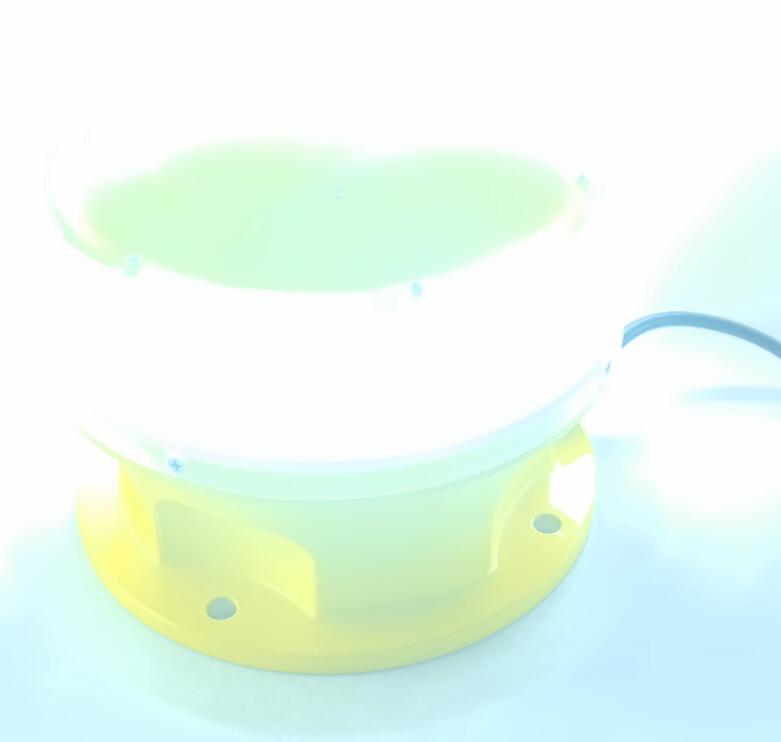Posted: 2025-07-15
As urbanization accelerates and infrastructure reaches new heights, the need for effective obstruction lighting has never been greater. These specialized lighting systems are designed to mark tall structures—such as skyscrapers, wind turbines, and telecommunication towers—ensuring they remain visible to aircraft and preventing potential collisions. This article explores the critical role of obstruction lighting, its different types, regulatory requirements, and emerging innovations that are shaping the future of aviation safety.
The Importance of Obstruction Lighting
Obstruction lighting serves as a visual warning system for pilots, particularly during low-visibility conditions such as night flights, fog, or heavy rain. Without these lights, tall structures could blend into the surrounding environment, posing a significant hazard to air traffic.
The primary objectives of obstruction lighting include:
Preventing Collisions – By making obstacles clearly visible to pilots.
Enhancing Navigation – Helping aircraft maintain safe altitudes and flight paths.

Complying with Aviation Regulations – Meeting strict international and national safety standards.
Types of Obstruction Lighting
Different structures require varying lighting configurations based on height, location, and purpose. The most common types include:
1. Low-Intensity Obstruction Lights
Used for structures under 150 feet (45 meters), these lights are typically steady-burning red LEDs. They are commonly installed on buildings near airports, where additional brightness is unnecessary.
| obstruction lighting |
2. Medium-Intensity Obstruction Lights
These lights are used for structures between 150 and 500 feet (45–150 meters). They can be either red or white, with flashing or steady illumination, depending on regulations.
3. High-Intensity Obstruction Lights
Reserved for the tallest structures (over 500 feet), high-intensity white strobe lights provide maximum visibility. They are often used on skyscrapers, broadcast towers, and wind farms.
| obstruction lighting system |
4. Dual Lighting Systems
Some installations combine red and white lights to optimize visibility while conserving energy. For example, a tower may use steady red lights at lower levels and high-intensity white strobes at the top.
Regulatory Standards for Obstruction Lighting
To ensure uniformity and effectiveness, obstruction lighting must comply with strict aviation regulations. Key regulatory bodies include:
International Civil Aviation Organization (ICAO) – Establishes global guidelines.
Federal Aviation Administration (FAA) – Sets standards in the United States.
European Aviation Safety Agency (EASA) – Oversees European compliance.
These regulations define:
Light colors and flash patterns (e.g., red steady vs. white strobe).
Minimum visibility ranges (ensuring pilots can see obstacles from a safe distance).
Placement and spacing (to avoid blind spots).
Non-compliance can lead to fines, increased accident risks, and even forced structure modifications.
Technological Innovations in Obstruction Lighting
Advancements in lighting technology have significantly improved the efficiency and reliability of obstruction lighting systems. Key innovations include:
1. LED Technology
LEDs have largely replaced traditional incandescent and halogen bulbs due to their:
Longer lifespan
Lower energy consumption
Higher brightness and reliability
2. Solar-Powered Systems
In remote or off-grid locations, solar-powered obstruction lights provide a sustainable solution. These systems store energy during the day and operate autonomously at night.
3. Smart Monitoring & Automation
Modern systems now feature:
Remote diagnostics – Allowing real-time fault detection.
Adaptive brightness – Adjusting light intensity based on weather conditions.
Wireless connectivity – Enabling centralized control of multiple installations.
4. Eco-Friendly Designs
To minimize light pollution and wildlife disruption, manufacturers are developing:
Dark-sky compliant lights – Reducing unnecessary skyglow.
Wildlife-friendly flash patterns – Less disorienting for birds and bats.
Challenges and Future Trends
Despite their effectiveness, obstruction lighting systems face challenges:
Light Pollution – Excessive brightness can affect astronomical observations and urban environments.
Wildlife Impact – Some strobe patterns may disorient migratory birds.
Maintenance Costs – High structures require periodic inspections and bulb replacements.
Future trends in obstruction lighting may include:
AI-Enhanced Systems – Predictive maintenance and automated adjustments based on flight data.
Advanced Materials – More durable and weather-resistant lighting fixtures.
Integration with Air Traffic Systems – Synchronizing lights with real-time aircraft movements.
Obstruction lighting is a critical component of aviation safety, ensuring that tall structures remain visible to pilots and preventing potential disasters. With advancements in LED technology, solar power, and smart monitoring, these systems are becoming more efficient, sustainable, and reliable.
As cities continue to grow upward and air traffic increases, the evolution of obstruction lighting will play a vital role in maintaining safe skies. By adhering to regulations and embracing innovation, the aviation and construction industries can ensure that these lighting systems continue to protect lives while minimizing environmental impact.
The future of obstruction lighting is bright—literally and figuratively—as new technologies pave the way for smarter, safer, and more sustainable solutions.